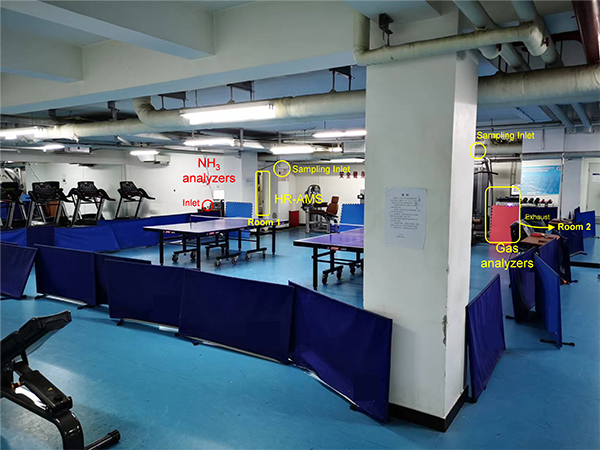Are you a gym rat? Love to pump iron or hit the treadmill? Well, before you dive into your next workout, here's something you might want to know about: the air you're breathing in the gym.
A recent study led by Prof. SUN Yele from the Institute of Atmospheric Physics, Chinese Academy of Sciences investigated the air quality in a basement gym. The study was published in
Environmental Science & Technology Letters.
"Thinking back to the pandemic, my colleagues and I made a point of hitting the gym in our institute's basement more often," Prof. SUN recalls. "Couldn't help but wonder what the air quality would be like with everyone breaking a sweat down there.”
This personal experience prompted Prof. SUN and his team to investigate the composition and concentration of pollutants in gym environments, recognizing the importance of understanding potential health risks associated with physical exercise."
An inside look at a basement gym with air quality monitoring instruments in the study. (Image by SUN Yele)
So, what did they find out? Brace yourselves!
First, their study showed that indoor air in the gym had a higher percentage of organic aerosols (particles containing primarily carbon, oxygen and hydrogen) compared to outdoor air. Inside the gym, about 50% of the stuff you're breathing in is organic aerosols, whereas it's only around 40% outside.
But here's where it gets really interesting. They identified two special types of organic aerosols in the gym air:
1. Siloxane OA (SiOA): This fancy term refers to particles that likely come from the lubricants used in gym equipment. Imagine that, the machines you're sweating on might be releasing tiny particles into the air. These particles were found to be surprisingly high, sometimes reaching up to 6 micrograms per cubic meter of air!
2. Cigarette Smoke OA (CSOA): Yup, you read that right. Even if you're not lighting up in the gym, traces of cigarette smoke were found in the air. Turns out, it's probably transported from outdoors, especially during ventilation.
While hitting the gym is fantastic for your health, these findings suggest that along with burning calories, you might also be inhaling some not-so-great stuff. Especially when your breathing rate kicks up during exercise, you're taking in more of these particles, which could potentially impact your health.
What does this mean for you? Well, it's a reminder that while you're busy sculpting those muscles, it's essential to consider the air you're breathing in. Different gyms with various equipment, occupancy rates, and ventilation systems might have different air quality levels.
Stay fit, stay healthy, and breathe easy, folks!

